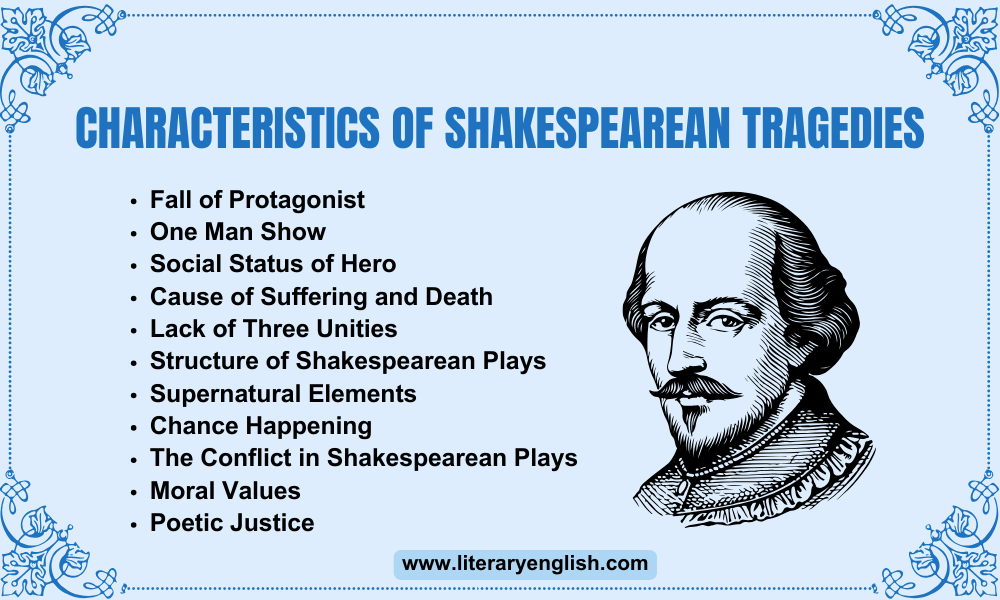Shakespeare’s Tragedy
The dramatic form of classical tragedy derives from the tragic plays of ancient Athens, which depicted the downfall of a hero or famous character of Greek legend. The hero would struggle against overwhelming fate, and his defeat would be so noble that he wins the moral victory over the forces that destroy him. A tragedy evoked pity and terror in the audience; it was a catharsis, or washing clean of the soul, which left the spectator trembling but purified.
Unity, Time, and Place
Aristotle proposed the tragic unities of Place, Time, and Action, that is, the whole tragedy would take place in a single location, for example, a house or a city square (this included messengers who came in from elsewhere), it would happen during the course of one day (including speeches about events which had happened in the past), and it would be a single story, without sub- plots. Compared with these strict rules, Shakespeare’s tragedy is a more relaxed genre, but Othello much more than, for example, the sprawling Hamlet, observes the spirit of Aristotle. Othello, apart from Act I in Venice, is located entirely within the fortress at Cyprus. Although logically the play covers an unspecified time lapse of, we presume, two or three weeks, it proceeds, more or less, by major scenes through the hours of the day, starting in Venice with the elopement after midnight, the Senate meeting at dawn, then at Cyprus with the morning storm and afternoon landings and developments, the fateful drinking party in the early evening and the murder at bed time. This is not to say that everything happens in the same day; it obviously cannot, but the impression is of an abstract day unfolding. The plot is fairly unified, focusing on Othello and his fate, and dealing with other people and events only in so far as they are relevant to this focus. Othello is about as near as Shakespeare gets to classical tragedy.
The Tragic Flaw
A. C. Bradley saw Shakespearean tragedy characterized by the “tragic flaw,” the internal imperfection in the hero that brings him down. His downfall becomes his own doing, and he is no longer, as in classical tragedy, the helpless victim of fate. Some say that Othello’s tragic flaw was jealousy which flared at suspicion and rushed into action unchecked by calm common sense. A more modern interpretation would say that Othello’s tragic flaw was that he had internalized, that is taken into himself, the prejudices of those who surrounded him. In his heart he had come to believe what they believed: that a black man is an unattractive creature, not quite human, unworthy of love. Thinking this, he could not believe that Desdemona could truly love him for himself. Her love must be a pretense, or a flawed and corrupted emotion. Iago hinted at these ideas, and Othello rushed to accept them, because they echoed his deepest fears and insecurities.
The Shakespearean Play’s Structure
Shakespearean tragedy usually works on a five-part structure, corresponding to the five acts: Part One, the exposition, outlines the situation, introduces the main characters, and begins the action. Part Two, the development, continues the action and introduces complications. Part Three, the crisis (or climax), brings everything to a head. In this part, a change of direction occurs or understanding is precipitated. Part Four includes further developments leading inevitably to Part Five, in which the final crisis of action or revelation and resolution are explained. Othello follows this pattern.
Related Articles
